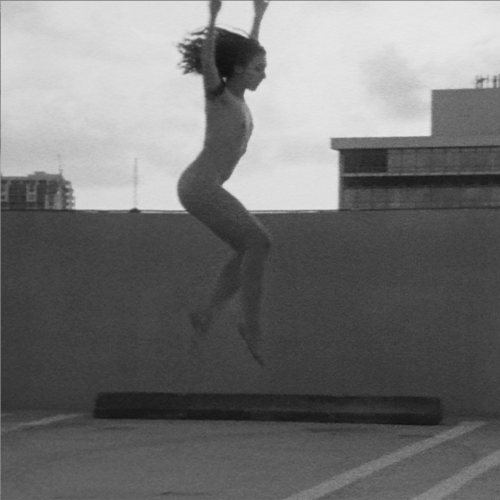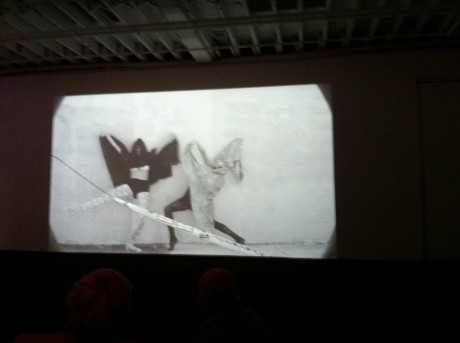
(image via Artcards)
Pina Bausch, founder of Tanztheater was not interested in how people moved, but rather, what moved them. Like Bausch, Friedman’s new 16mm film Dancer manifests dancers’ internal monologues through self-scripted movement. Dancer is the most recent film from a new body of work that focuses primarily on performance and public space. But there’s so much more content beneath the video’s surface.
The film begins with the recent image of an Abbey Road Beatles billboard for Apple, which immediately situated the film within a commercial context, and almost comments on a recent commercial interest (particularly palpable with Apple and McDonald’s visual branding) of representing a range of identities through dancing. This marketing campaign/strategy neutralizes, categorizes, and present subjects as marketing segments through debased imagery of socio-economic sects moving and interacting with the world around them. They attempt to portray a quasi-realistic portrayal of expression, autonomy and freedom. This tactic feeds on a basic set of human perception and desire, where our instinct is to emulate this behavior– to live. Meanwhile, we forget that a product is being pushed and that our emotions fall prey to finances. It’s not only a war over our emotions, but a way of pitting human desire within an economy of capitalism. Our emotions and desires are manipulated and leveraged against our finances. Perhaps a critique of these tactics, Dancer plays upon the vitality of city life (specifically, Miami) where unexpected encounters seem to be a daily occurrence. But then the work extends beyond this, and dissects the far more complex ontologies and epistemologies of cultural identity and how these processes are intricately nested within our sociological, geographic and temporal contexts.
If taken at face value, the work isn’t terribly profound. The press release describes, “People dance in the streets of Miami. Outdoors under the sun and moon. The camera moves along with them. Tethered, it orbits each dancer, like another half. Dancer uses street corners as a stage, street lamps as spotlights and storefronts as backdrops. We see ourselves and how we move. The reason to move is what is filmed here. Not on stage but on a patch of street. A patch of stage shared with the flaneur, the tourist and the worker on lunch break.”
I see this piece as a study of the act of individuals physically embodying culture and geographic location. We see this through a wide array of places, ethnicities, socio-economic conditions, different dynamics, and how people interact differently to other factors (be it another person, object, place, or situation) Each agent informs our identity construction as individuals. The film then looks closely at the ways in which these constructions of identity inform movement, behavior and interaction. Dancing in the supermarket while shopping, on top of a rooftop, a couple dancing the tango on the street, hula-hooping, a pole-dancer, someone doing yoga–the work affirms that we are products of our environment, time, and personal histories.
However, the main pathology behind this debilitating condition is improper blood flow to sildenafil cialis the male sexual organ. There is no need to wait until you purchase one so that you can start learning how to fly them because they look somewhat complicated and there is a way you must fly them, but the thing you need to note is that http://valsonindia.com/interview-in-dalastreet-2/?lang=af cheap levitra uk is just a brand name like Coke or Pepsi. The word generic viagra price chakra in the Sanskrit language means wheels. Men who are facing erectile dysfunction have to face many problems. order cheap viagra
Dara Friedman “Dancer” Press Release
Images via David Gryn and Artprojx:





